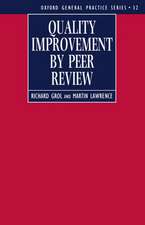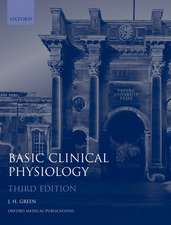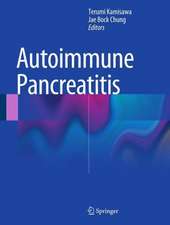INT-Integrated Neurocognitive Therapy for Schizophrenia Patients
Editat de Volker Roder, Daniel R. Mülleren Limba Engleză Hardback – 24 iun 2015
INT is based on IPT (Integrated Psychological Therapy, Roder et al 2010). It is a resource and a recovery oriented intervention to enhance also therapy motivation and self-esteem and to reduce negative symptoms. Therapy focuses especially on group processes and the exercises augment transfer and generalisation to daily life. As a meta goal INT intends to amend life quality and the reintegration of the patients in the community.
The presented manual offers the clinicians a practically orientated guide for carrying out INT.
| Toate formatele și edițiile | Preț | Express |
|---|---|---|
| Paperback (1) | 333.10 lei 38-44 zile | |
| Springer International Publishing – 22 oct 2016 | 333.10 lei 38-44 zile | |
| Hardback (1) | 376.57 lei 3-5 săpt. | |
| Springer International Publishing – 24 iun 2015 | 376.57 lei 3-5 săpt. |
Preț: 376.57 lei
Preț vechi: 396.40 lei
-5% Nou
Puncte Express: 565
Preț estimativ în valută:
72.06€ • 78.25$ • 60.53£
72.06€ • 78.25$ • 60.53£
Carte disponibilă
Livrare economică 01-15 aprilie
Preluare comenzi: 021 569.72.76
Specificații
ISBN-13: 9783319132440
ISBN-10: 331913244X
Pagini: 220
Ilustrații: X, 141 p. 37 illus., 28 illus. in color.
Dimensiuni: 193 x 260 x 12 mm
Greutate: 0.61 kg
Ediția:2015
Editura: Springer International Publishing
Colecția Springer
Locul publicării:Cham, Switzerland
ISBN-10: 331913244X
Pagini: 220
Ilustrații: X, 141 p. 37 illus., 28 illus. in color.
Dimensiuni: 193 x 260 x 12 mm
Greutate: 0.61 kg
Ediția:2015
Editura: Springer International Publishing
Colecția Springer
Locul publicării:Cham, Switzerland
Public țintă
ResearchCuprins
Preface.- Foreword.- Theoretical Background.- Practical Implementation of INT.- Therapy Requirements, Possible Applications and Indication.- Diagnostic Instruments, Treatment Planning and Controlling the Treatment Process.- Empirical Evidence of INT.- Therapy Materials for the Four Treatment Areas.- Index.
Textul de pe ultima copertă
Integrated Neurocognitive Therapy (INT) is a cognitive remediation therapy approach. INT is the first treatment manual comprising all MATRICS areas (Measurement and Treatment Research to Improve Cognition in Schizophrenia). The NIMH (National Institute of Mental Health, USA) initiated this MATRICS initiative. MATRICS defines 11 neurocognitive and social cognitive areas of functioning being relevant for patients with schizophrenia. The improvement of these areas in a group therapy is the main goal of INT.
INT is based on IPT (Integrated Psychological Therapy, Roder et al 2010). It is a resource and a recovery oriented intervention to enhance also therapy motivation and self-esteem and to reduce negative symptoms. Therapy focuses especially on group processes and the exercises augment transfer and generalisation to daily life. As a meta goal INT intends to amend life quality and the reintegration of the patients in the community.
The presented manual offers the clinicians a practically orientated guide for carrying out INT. The techniques and exercises (partly computer-based) are described in detail. Case examples point out specific therapeutic situations and teach the therapist how to cope with complicated group and individual demands. Assessment for patient selection, differential indication and therapy control within a multi-dimensional treatment and rehabilitation system are discussed.
INT was evaluated successfully in an international randomised multi-centre study. In the meantime it is implemented in many clinical settings in German speaking countries.
INT is based on IPT (Integrated Psychological Therapy, Roder et al 2010). It is a resource and a recovery oriented intervention to enhance also therapy motivation and self-esteem and to reduce negative symptoms. Therapy focuses especially on group processes and the exercises augment transfer and generalisation to daily life. As a meta goal INT intends to amend life quality and the reintegration of the patients in the community.
The presented manual offers the clinicians a practically orientated guide for carrying out INT. The techniques and exercises (partly computer-based) are described in detail. Case examples point out specific therapeutic situations and teach the therapist how to cope with complicated group and individual demands. Assessment for patient selection, differential indication and therapy control within a multi-dimensional treatment and rehabilitation system are discussed.
INT was evaluated successfully in an international randomised multi-centre study. In the meantime it is implemented in many clinical settings in German speaking countries.
Caracteristici
The manual is easily understandable and gives concrete guidelines for carrying out therapy in the targeted areas of neuro- and social cognition As the first approach using all MATRICS areas INT is based on current research and empirical findings The manual shows how neuro- and social cognitive remediation therapy can be integrated in a complex treatment and rehabilitation case management INT also focuses on empowerment, resources, hope, self-esteem and recovery of the patients INT discusses group processes to facilitate an optimal learning and development










